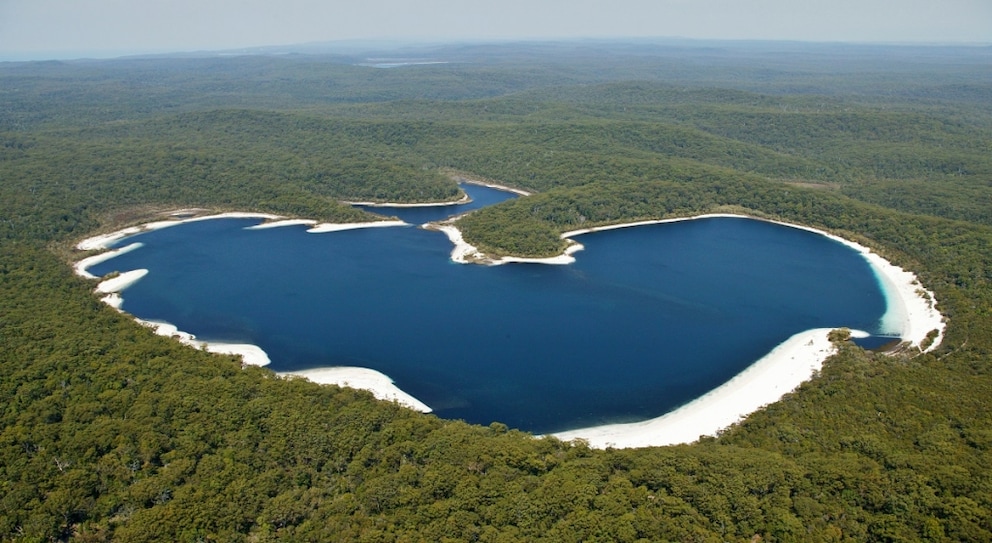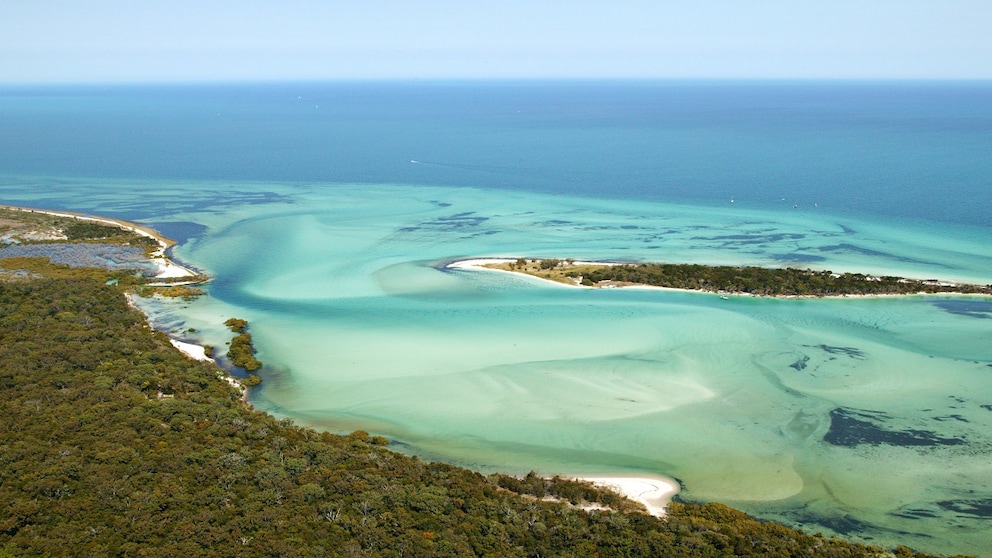April 10, 2025, 9:10 am | Read time: 4 minutes
K’gari, off the coast of the Australian state of Queensland, is, in many ways, a true dream destination for travelers “Down Under.” White beaches, clear lagoons, and even a rainforest await guests. But the destination also has a rather scary dark side. K’gari is repeatedly referred to in the international media as the most poisonous island in the world, and this is due to some of its animal inhabitants.
A few kilometers from the coast of the Australian state of Queensland, separated only by the waters of the Great Sandy Strait, lies a place of unique beauty. It is probably still known to international travelers as Fraser Island, but in the Aboriginal language, it is called K’gari. Translated, this means paradise, and that’s exactly where anyone visiting the island might think they are. However, despite its proximity to the mainland, comparatively few tourists visit each year. And this is due to a superlative that sends a shiver down your spine just by reading it.
No, it has nothing to do with the fact that K’gari is the largest sand island on our planet, according to WELT. With a size of 1840 square kilometers, it has twice the surface area of Rügen, but only 200 people live here. This is also not because there is only one hotel complex in addition to camping facilities. And certainly not because of the 40 truly paradisiacal dune lakes that have been created here over the course of time in the middle of tropical rainforest. What stops visitors from making the pilgrimage here in droves is a reputation that K’gari would probably like to get rid of somehow. The 124-kilometre-long and only 25-kilometre-wide island is considered the most poisonous in the world.
Deadly Island Inhabitants

This is attributed to several of the animal inhabitants that, with a stroke of misfortune, can be encountered here. Three of the ten most poisonous spider species are native to K’gari. Unfazed by spiders? Regrettably, the island is also home to no fewer than four of the ten deadliest snake species on our planet. And as if that wasn’t enough, the island is also populated by dingoes, predators from the dog family. And these can become extremely aggressive, especially when searching for food. Unfortunately, fleeing or hiding is of little help: dingoes can swim, dive, and even climb trees.
None of this bothers you? Well, even the dream beaches of K’gari should be enjoyed with caution. As reported by TRAVELBOOK and others, the highly poisonous Irukandji cube jellyfish has been spotted here in the past. In 2017, four people were so seriously injured in accidental contact with the sea creature that they had to be hospitalized. The animal is also particularly dangerous because it is barely bigger than a thumbnail and, therefore, virtually invisible in the water. Its stings cause severe pain and nausea and can also cause heart attacks in older or sick people.

“Red Tide” Threatens the Coast of Florida! Danger for Beach Visitors

11 Tropical Destinations Where Vacations are still Relatively Cheap

Why This Temple Is Guarded by Sea Serpents
Perils in the Water

And as if all that wasn’t enough, crocodiles can sometimes be found on the beach on K’gari. They do not permanently inhabit the island or lay their eggs here, but according to the websites of several local tour operators, there have been sightings of the mega lizards in the past. According to “Fraser Island Tours Australia,” sharks regularly appear in the waters off the world’s most poisonous island, attracted by the large schools of fish in the shallow waters near the beaches. However, the website explicitly warns against dingoes.
There have already been several dingo attacks on tourists on K’gari, some of which have even ended fatally. Particularly dramatic: the victims were mostly children, as their smaller body size makes them ideal prey for the wild dogs. As such, luring or feeding the animals is strictly forbidden and, as reported by WELT, subject to steep fines. But why, despite all these dangers, do 600,000 visitors come to K’gari every year?
Also interesting: Queimada Grande in Brazil: the deadliest island in the world
Part of the allure may be the island’s encircling dream beaches, which are picturesque enough to grace any photo calendar or Instagram feed. In the interior of the country, in addition to the rainforest with its trees that are up to 1,200 years old, there are also 40 beautiful dune lakes waiting for bathers. Here, splashing around is free from danger, making it a particularly beloved activity among K’gari’s visitors. For the active traveler, the 90-kilometer Fraser Island Great Walk offers an opportunity to explore the island on foot. It has been a UNESCO World Heritage Site since 1992. However, it only regained its original name on June 7, 2023.


